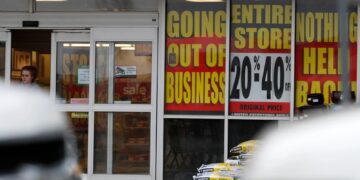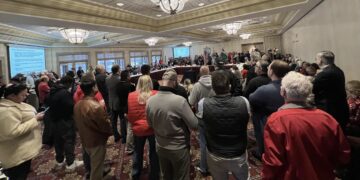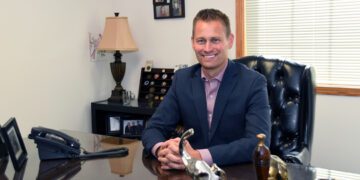By State Representative Brad Halbrook -
A picture is worth a thousand words and the frozen wind turbines in Texas are speaking volumes.
No, the frozen wind turbines are not entirely the reason so many Texans are without power, as the environmentalists are so quick to point out. The turbines make up anywhere between 12 and 25 percent of the state’s power mix this time of year. So yes, wind turbines are not the only culprit here, but they do bear a significant amount of the blame.
When frozen turbines are not able to produce electricity – that power has to come from somewhere and when you combine the increased demand as a result of frozen turbines along with the increased demand of people needing more power to heat their homes during a massive cold front, the end result is widespread power loss.
What is happening in Texas is a clear illustration of the faulty thinking of those who are advocating an unreasonable timetable to become carbon neutral. As the frozen turbines clearly reveal, wind power is not a reliable or consistent source of energy. Summers get hot and winters get cold. This has been true for centuries. Even in a place like Houston, snow does fall, and the weather does get cold. The need for power during summer and winter is real.
Since 1881, it has snowed 94 times in Houston. Winter weather is not common but there have been cold fronts in Houston long before the climate change became fashionable. What should be the most surprising (and the most frustrating) part about this situation is not that it snowed in Houston, but that there does not seem to be enough power to sustain people through the cold front.
Extreme environmental policies are driving power plants out of business and there is not enough wind or solar to fill the void in the power grid. The revitalization of manufacturing during the Trump Administration, along with the addition of electric cars on the roads and smart devices in our homes are placing unprecedented demands on our electrical grid.
Any hint of putting new power plants online sparks protests from the radical environmentalist sector. The end result is what we are seeing in Texas. The real travesty in the Texas situation is not the inadequacy of the frozen turbines but that there is not enough power being generated at the other plants to meet demand.
The goal of any state’s energy policies should be to have enough available power to cover any contingency. Radical environmentalists are pushing state officials to arbitrarily steer more and more energy production to alternative energy sources such as wind and solar so that politicians can brag to the press about how green their states are.
The shift to so-called green energy sources may be reducing the amount of power being produced at oil and gas and coal fired plants, but the amount of power being produced is barely enough to meet ordinary demands and certainly not enough to meet extraordinary demands.
Here in Illinois, radical environmentalists are pushing legislation that would create vulnerabilities in the accessibility and affordability of energy in our state. Long-term, wind and solar may become viable alternatives but the future is not now. We need energy that is accessible and affordable.
We cannot afford the kind of large-scale power loss we are seeing in Texas as demand exceeds capability. What is happening in Texas is serious. There have been at least 17 people who have died as a result of the cold weather there.
Not having power in freezing temperatures puts people’s lives at risk. We should learn from the Texas experience and reject these arbitrary clean energy policies that destabilize the power market and puts lives at risk. The reality is that frozen turbines won’t keep hospitals and nursing homes heated during the cold Central Illinois winters. Before we do anything, we must ensure the future accessibility and affordability of energy as if our lives depended on it – because they do.
Rep. Brad Halbrook has represented Illinois' 102nd District since 2012.







